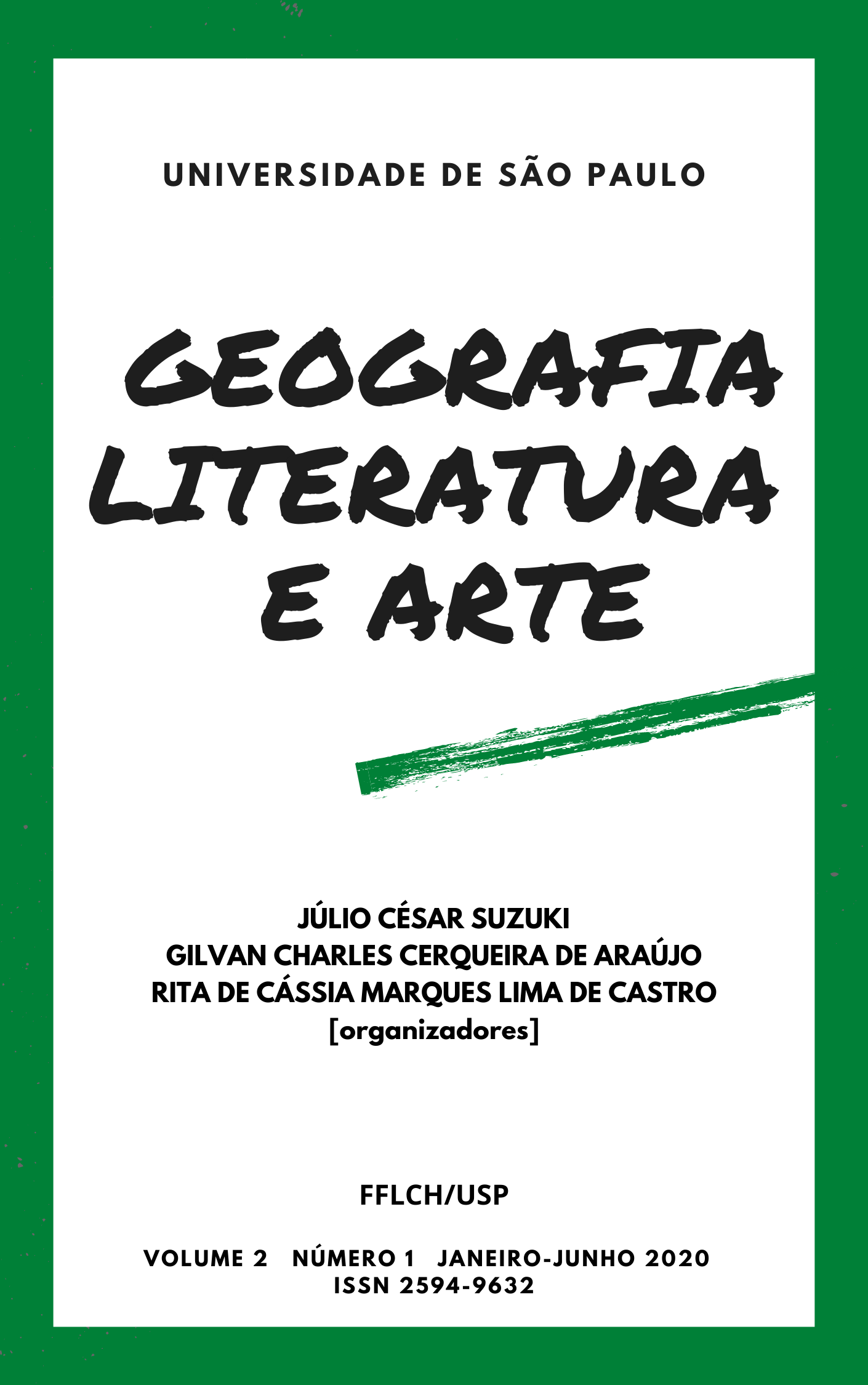Geography of the population and Literature
on the viability of this meeting and its possible results
DOI:
https://doi.org/10.11606/issn.2594-9632.geoliterart.2020.164103Keywords:
Population Geography, Literature, LandscapeAbstract
The population geography accumulates a considerable body of knowledge about the man in the most basic aspects of its existence. In this fountain are dissected the possibilities and choices of consumption of this man, the duration of his existence, his sex and his reproductive tendencies and even the aspects of his death. It must be recognized that this sorting, classification, and weighting operation is highly effective in the process of administering the growing numbers under the tutelage and surveillance of the State or in the private planning spheres. On the other hand, there is an uneasy gap between this branch and literature. This, if it does not have man as a single object, is also viscerally linked to it, allowing itself to become a privileged source of inspiration or subsidies to the population geography. This article intends to review this gap while seeking to investigate some of its reasons while proposing, also, to place the landscape as a concept that can establish this connection, given its origin linked directly to art as well as the tradition that the concept occupies within geographic research.
Thus, the purpose of this article is to review this gap, while simultaneously seeking to investigate some of its reasons. As a result of the mentioned objective, the landscape appears as a concept that can establish this connection. In this sense, in order to substantiate the proposition we are now forwarding, two main arguments are called for: the landscape is examined as a concept with a long tradition within geographic research, but, above all, it is considered its qualification, considering the origin directly linked to art. Finally, as a balance of this effort, some paths open to this reconciliation are pointed out, with emphasis on a new posture that the geography of the population needs to assume in the face of appearance, the visible, as well as the subjectivity role in the analysis of the geographical phenomenon.
Downloads
References
CABRAL, Luís Otávio. A paisagem enquanto fenômeno vivido. Geosul, Florianópolis, v.5, 0.30, p 34-45, jul./dez. 2000.
CHEVALIER, Jacques. Espace de vie ou espace vécu? L'ambiguïté et les fondements du concept d'space vécu. L'Espace Géographique, n. 1, 1974.
CLAVAL, Paul. Epistemologia da Geografia. UFSC. Florianópolis. 2014.
CUNHA, Alexandre Mendes. Espaço, paisagem e população: dinâmicas espaciais e movimentos da população na leitura das vilas do ouro em Minas Gerais ao começo do século XIX. In: Revista Brasileira de História. São Paulo, v. 27, nº 53, p. 123-128, 2007.
DAMIANI, Amélia. População e Geografia. 5ª edição. Contexto: São Paulo, SP. 1991.107 p.
DE MARTONNE, Emannuel. Panorama da Geografia. Cosmos: Lisboa. 1953.
DARDEL, Eric. O homem e a terra: natureza da realidade geográfica. São Paulo: Perspectiva, (1952- 2015).
DESROSIÉRES, Alain. La política de los grandes números. Barcelona: Melusina, 2004.
GEORGE, Pierre. Geografia da População. Coleção Saber Atual, Difel, São Paulo. 1971.
GÓES, Eda Maria; BELTRÃO SPOSITO, Maria Encarnação. Práticas espaciais, cotidiano e espaço público:o consumo como eixo da análise do calçadão de Presidente Prudente-SP. Revista da ANPEGE, [S.l.], v. 12, n. 19, p. 39-65, jun. 2017. ISSN 1679-768X. Disponível em: <http://ojs.ufgd.edu.br/index.php/anpege/article/view/6373>. Acesso em: 03 maio 2019.
HUFF, Darrel. Como mentir com estatística. Rio de Janeiro: Edições Financeiras, 1968.
MASSEY, Doreen. Pelo espaço. Rio de Janeiro. Bertrand, 2005.
MILLÉO, José Carlos. Mudanças sociais, população e espaço: buscando renovar as bases para o estudo dessa relação na contemporaneidade. Rev. Tamoios, São Gonçalo RJ, ano 10, n. 2, p. 88-100, jul/dez. 2014.
MOREIRA, Ruy. O Discurso do avesso (para a crítica da Geografia que se ensina). Rio de Janeiro: Contexto,.2014.
PAGANELLI, Tomoko. Reflexões sobre categorias, conceitos e conteúdos geográficos: seleção e organização. In: PONTUSHCKA, Nícia Nacib; OLIVEIRA, Ariovaldo Umbelino de. Geografia em Perspectiva.. São Paulo: Contexto.2002. p.149-158
RAFFESTIN, Claude. Por uma geografia do Poder. São Paulo: Ática, 1993.
SANTOS, Milton. A natureza do espaço. São Paulo: Hucitec, 1997.
SERPA, Angelo. Milton Santos e a paisagem: parâmetros para a construção de uma crítica da paisagem contemporânea. Paisagem Ambiente: ensaios, n. 27, São Paulo, p. 131 – 138, 2010.
SOUZA, Marcelo Lopes de. Os conceitos fundamentais da pesquisa sócio-espacial. Rio de Janeiro: Bertrand-Brasil, 2013.
TRICART, Jean. Ecodinâmica. Rio de Janeiro: IBGE e SUPREN,1977.
ZUSMAN, Perla. La descripción en Geografía: un método, una trama. Boletín de Estudios Geográficos, nº 102, p. 135-149, 2014. Disponível em: <http://bdigital.uncu.edu.ar/6811>. Acesso em: 03 mai.2019.
Downloads
Published
Issue
Section
License
Copyright (c) 2020 José Carlos Milléo

This work is licensed under a Creative Commons Attribution 4.0 International License.


